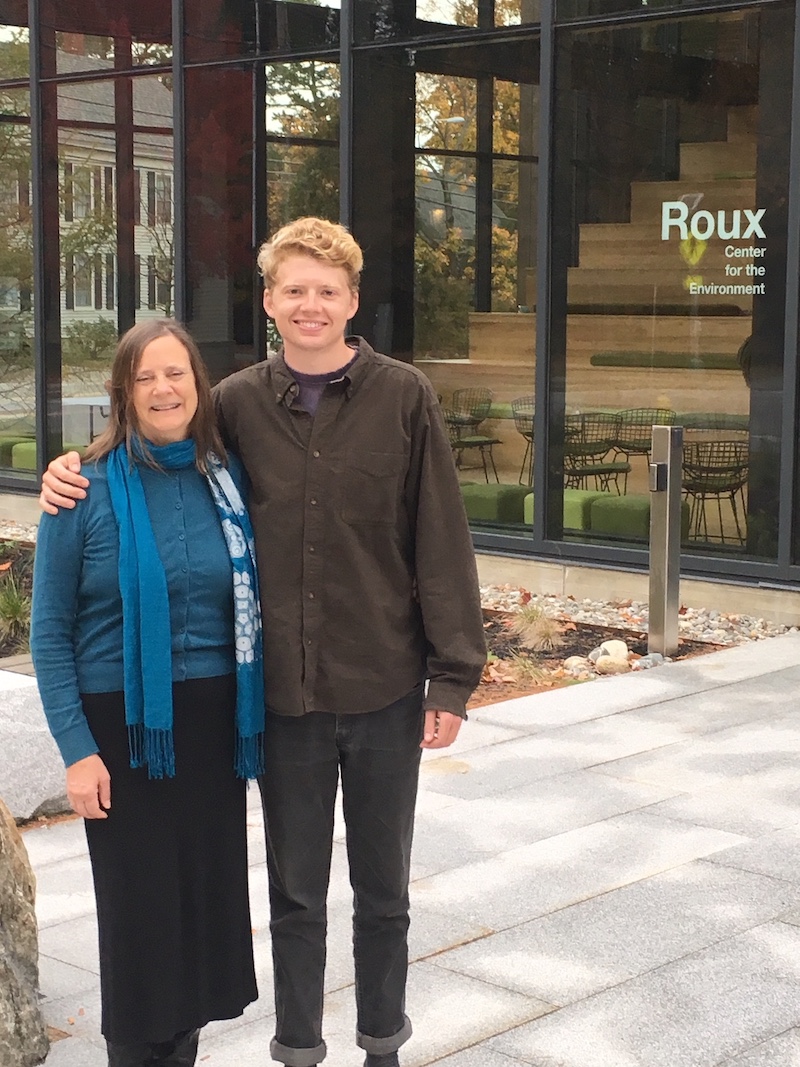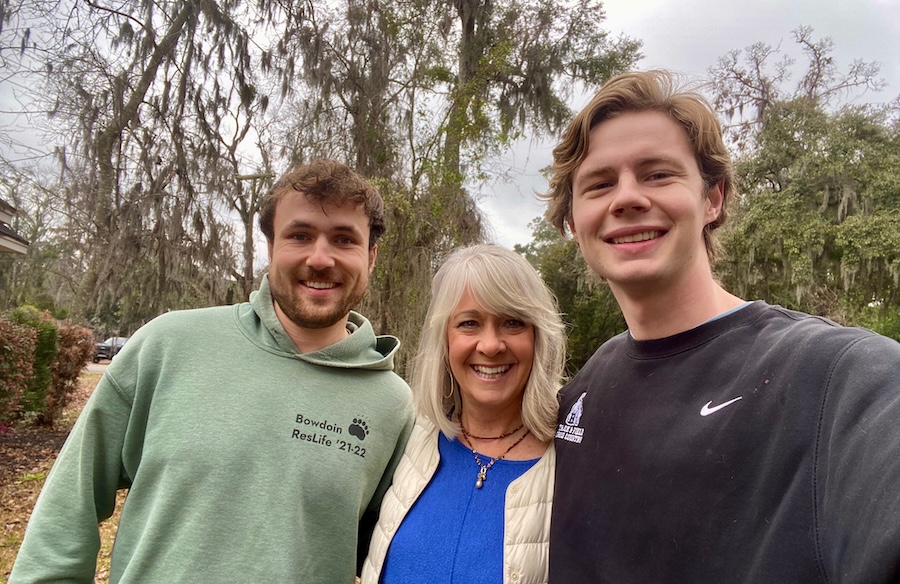Luke Carberry ’18 and Professor Collin Roesler Publish Breakthrough Oceanography Finding
By Rebecca Goldfine
Because phytoplankton lie at the foundation of the aquatic food web—nourishing everything from zooplankton to whales—the magnitude of their population drives the productivity of the entire aquatic ecosystem. In addition, phytoplankton play a large role in climate change since they absorb carbon dioxide on the scale of forests and other terrestrial plants.
So Carberry's discovery "is a tremendous contribution," said Professor of Earth and Oceanographic Science Collin Roesler. Both Roesler and Susan Drapeau, a senior laboratory associate at Bowdoin, are Carberry's coauthors on the journal article.
The new approach that Carberry investigated, with guidance and data from Roesler and Drapeau, will not only be useful to oceanographers, but also to water quality specialists and many other scientists. "For anyone interested in phytoplankton in lakes, rivers, and in the ocean, anyone who wants to model carbon or model primary production, and anyone using ocean color satellites to detect phytoplankton, this will result in a significant improvement in their data," Roesler said.
Included in the recent article is the code they created, along with a sample data set, so others can practice and learn the process before applying it to their own data sets.
Currently, Carberry is a graduate student at University of California Santa Barbara's Interdepartmental Graduate Program in Marine Science. He says the four independent studies he did with Roesler that led to the publication of the paper is extremely relevant to his current research agenda.
At UCSB, he's using autonomous underwater vehicles to measure space and time in a water column at a higher resolution than normal observation systems can manage. "I will be using these vehicles to understand what the true variability in phytoplankton abundance looks like in order to ask [two big questions]: how much of that variability is being missed by the common measurements we make of the ocean from boats and from satellites, and how does our understanding of the relationship between phytoplankton and their physical environment change now that we can observe them in high resolution?"
Limnology and Oceanography publishes research articles, reviews, and comments about all aspects of oceanography and the biological, chemical, and physical features of lakes and other bodies of fresh water. The journal’s unifying theme is the understanding of aquatic systems. And funding for the Ocean Carbon & Biogeochemistry Project Office, which publishes a regular newsletter, is provided by the National Science Foundation and the National Aeronautics and Space Administration. The Ocean Carbon & Biogeochemistry Project Office is housed at the Woods Hole Oceanographic Institution in Massachusetts.
He also gives a lot of credit to his earth and oceanographic science (EOS) professors for preparing him for advanced studies.
"I gained a comprehensive understanding of the earth system at Bowdoin. I can focus, while here, on augmenting the knowledge that I already have, rather than trying to establish my understanding of the foundational oceanographic principles," he said. "This is all credit to Bowdoin EOS professors."
How the method works (in a nutshell)
The best way to assess the amounts of phytoplankton in a water body is to scan for chlorophyll because phytoplankton are essentially the only planktonic organism in the ocean that have the green photosynthesizing pigment. "So it's a near perfect proxy," Roesler said.
And the best way to scan for chlorophyll is to look for and measure the light it emits. "Chlorophyll is a beautifully structured molecule, it's so amazing," Roesler said. "It not only absorbs light—mostly blue and red wavelengths— but it also fluoresces, emitting red light."
Researchers can use sensors to emit blue light, and if these pick up red light in return, they know they're detecting phytoplankton chlorophyll, which can be calibrated to calculate the corresponding concentration of phytoplankton in the water.
The only problem with this technique is that phytoplankton don't fluoresce throughout the day and night. In high light, phytoplankton "shut down their photosynthetic machinery," Roesler said. So during the brighter part of the day, roughly between 9:00 a.m. and 3:00 p.m., phytoplankton fluorescence dims, or is "quenched."
Unfortunately, that's also when satellites are typically measuring phytoplankton from space. These satellite values need to be calibrated, and "if you were just looking at the fluorescence, you would think the phytoplankton concentration decreased," Roesler said. "But it didn't decrease, there are still plenty of cells in the water, just their fluorescence decreased."
In dynamic coastal waters a researcher can't assume that nighttime values are the same as daytime values because the ocean tides move the phytoplankton populations around. "So what we did was develop a model that simulates the tide effect and the quenching effect, and therefore reconstructs the biomass during the day" Roesler said. The approach provides unambiguous phytoplankton concentrations and reveals underlying variations in the populations.



